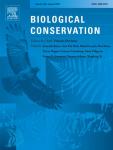Spatiotemporal trends and drivers of population dynamics in a declining desert predator
Information on population trends, population structure, and factors that drive them is useful for assessing extinction risks and for guiding conservation. In arid environments, weather often has large effects on population dynamics and climate change may be driving pervasive population declines. I used time-series data and two approaches that make different assumptions about observation error and process noise to evaluate population trends and population structure of ferruginous pygmy-owls (Glaucidium brasilianum) in the Sonoran Desert of northwest Mexico, and assessed how temporal variation in weather and spatial variation in vegetation and land use affected dynamics. Abundance declined over 12 years based on both approaches, but estimates from multivariate state-space models that explicitly considered observation error and process noise, were steeper (−2.8%/yr) with lower precision (SE = 3.6%) than those from mixed-effects models (−1.9%/yr, SE = 0.8%) that assumed no process noise. Annual precipitation at a two-year lag had positive effects and brooding-season temperature at a one-year lag had negative effects on abundance, and together explained 75% of variation in population dynamics that were largely synchronous across space, suggesting climate forcing. Abundance was persistently higher and varied less in areas with more nest cavities, more riparian vegetation, and lower land-use intensity, suggesting these factors are important drivers of habitat quality and good targets for managers. These results have important implications in arid regions of western North America where drought and extreme temperatures linked to climate change have prevailed over much of the last decade and where monitoring and conservation measures are needed to address these threats.

